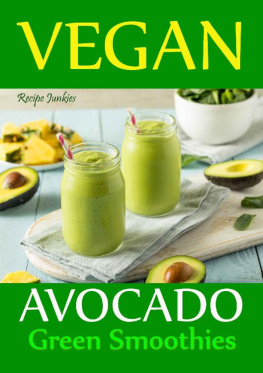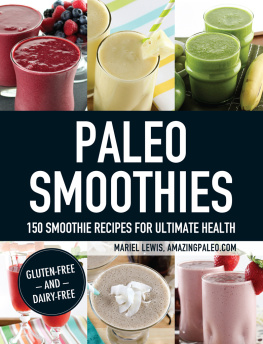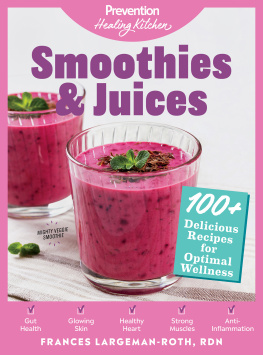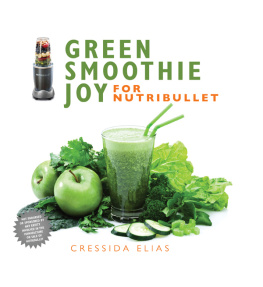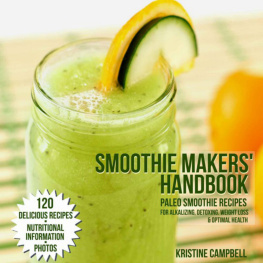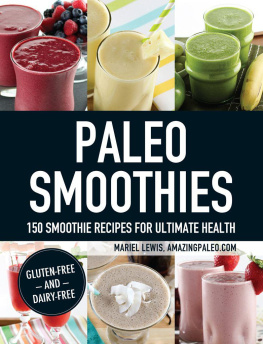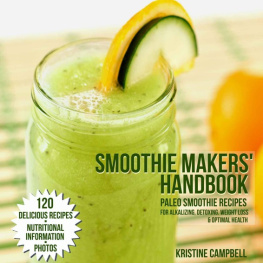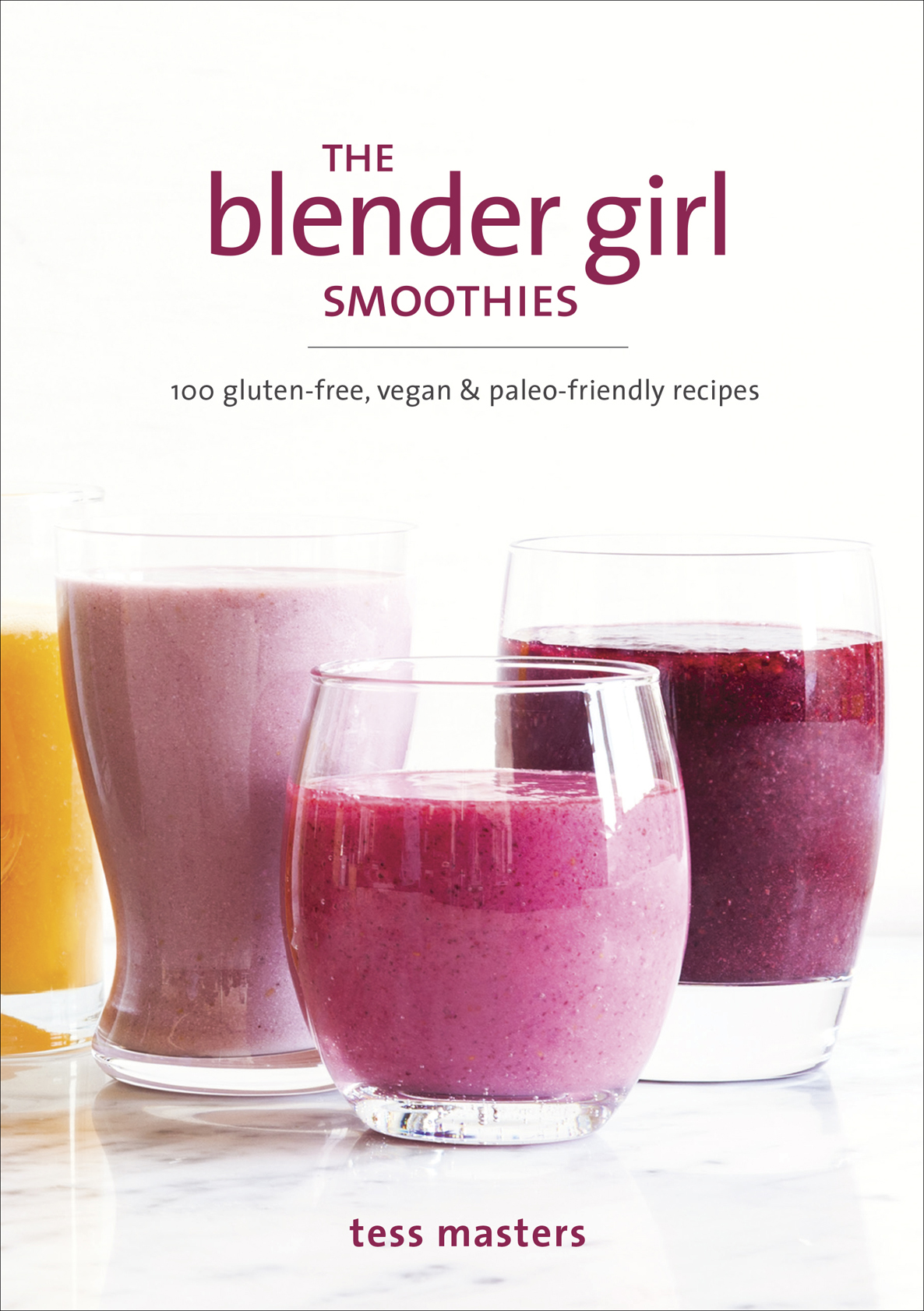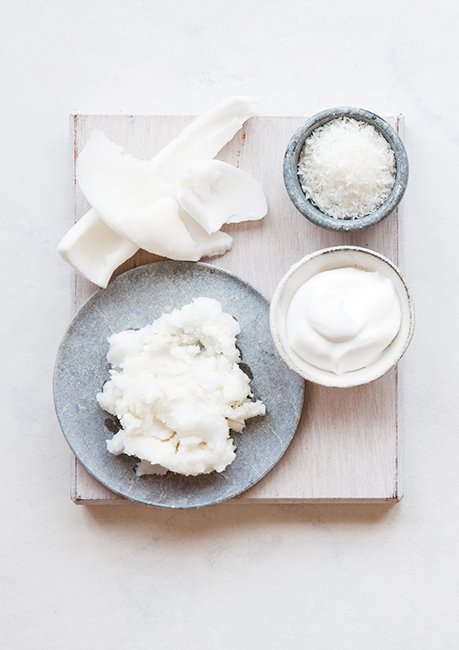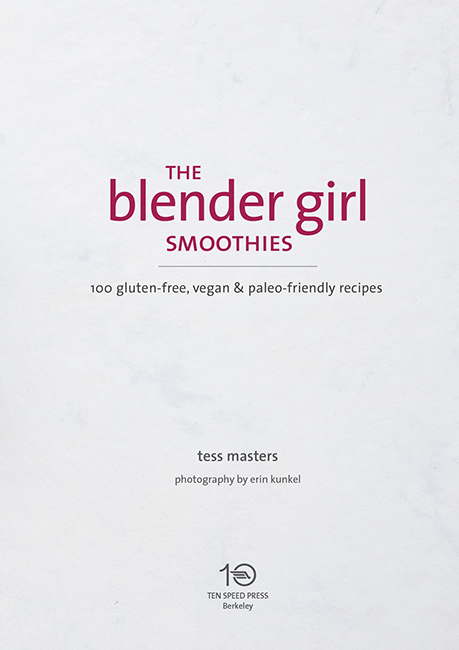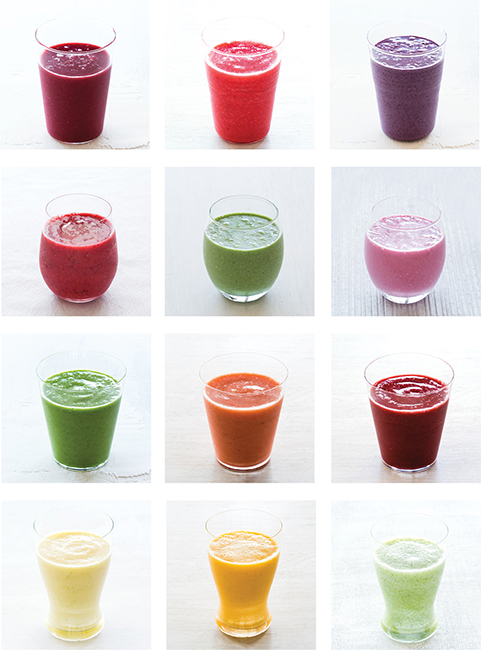The information contained in this book is based on the experience and research of the author. It is not intended as a substitute for consulting with your physician or other healthcare provider. Any attempt to diagnose and treat an illness should be done under the direction of a health-care professional. The publisher and author are not responsible for any adverse effects or consequences resulting from the use of any of the suggestions, preparations or procedures discussed in this book.
Copyright 2014, 2015 by Tess Masters
Photographs copyright 2014 by Erin Kunkel
Author photograph copyright 2014 Anson Smart
All rights reserved.
Published in the United States by Ten Speed Press, an imprint of the Crown Publishing Group, a division of Penguin Random House LLC, New York.
www.crownpublishing.com
www.tenspeed.com
Ten Speed Press and the Ten Speed Press colophon are registered trademarks of Penguin Random House LLC.
Portions of this work were previously published in The Blender Girl Smoothies app, published in the United States by Ten Speed Press, a division of Penguin Random House LLC, New York, in 2014.
Library of Congress Cataloging-in-Publication Data
Masters, Tess.
The Blender Girl smoothies: 100 gluten-free, vegan & paleo-friendly recipes / Tess Masters.
pages cm
Includes bibliographical references and index.
1. Smoothies (Beverages) 2. Vegetable juices.
I. Title. TX817.S636M37 2015
641.875dc23
2015003754
Hardcover ISBN: 978-1-60774-8939
eBook ISBN: 978-1-60774-894-6
Art direction by Emma Campion
Icon design by Maxwell Hibbert
v3.1_r2
contents
CHAPTER
smoothie secrets
In a smoothie, I want fabulous flavor and nutritional power. Basic smoothies containing liquid, fruits, vegetables, and ice can be yummy, but super-simple blends often taste a bit flat and uninteresting. For me, a smoothie can be a meal, and I go to herbs, spices, greens, oils, and superfoods to create a dimensional drink that takes me on a flavor journey like a textured dish. For information about these smoothie-enhancers, see .
Other than grazing in your produce drawer, nothings healthier and faster than making a smoothieperfect for kids, beginner cooks, and busy people on the run.
Eating fruits and vegetables this way is more fun, too. Blending them into smoothies gives you endless flavor combinations, and the best part is that its almost impossible to mess things up! Whether youre making a nutritious meal replacement, a protein-powered workout booster, or a dessert shake, you can be bold and creative. Throw ingredients into your blender knowing that, in most cases, you can rescue a gag-worthy experimental brew with fruit, sweetener, or a bit of chocolateand tweak flavors right up to the moment of serving.
But, some exotic concoctions blend up into what looks like a big glass of death, with an unpalatable sickly tinge and a mealy or sludgy texture. We take the first sip of a smoothie with our eyes, and only hard-core addicts thrill to a rhapsody in brown. Experimenting with thousands of combinations, Ive developed a set of strategies for healthy, creamy, or frosty smoothies that look gorgeous, taste amazing, and offer big nutritional bang for your buck. Dream up your own blendsations with the as a guide.
strategies for success
If youve read The Blender Girl cookbook, youre probably somewhat familiar with my general smoothie ) that I didnt have space for in the smoothies chapter of that book.
follow the smooth order
For the most efficient blend (and the smoothest consistency), pour liquids into the container first. This helps the blades get moving when you turn on your blender, and encourages the solid ingredients to liquefy more evenly. Next, add powdered ingredients such as cacao, protein blends, and superfood powders, and cover them with soft ingredients like bananas, avocados, fresh berries, and cucumber. (This keeps the powders from flying up into the lid.) After that, throw in hard ingredients like frozen fruits and raw fibrous vegetables. Always throw the ice in last, to help the machine pull all the other ingredients down into the blades for even mixing.
Note: With personal blenders (since you fill, and then invert the container onto the motor to blend), reverse this order and put ice in first.
choose premium produce
Using locally grown organic fruits, vegetables, and herbs in season and at the peak of ripeness supports your local community and gives you flavor-rich blends that are healthy and free of synthetic pesticides and genetic modification. That said, organic produce can be expensive. A good way to compromise is to focus on the produce thats most susceptible to pesticides. Use the Environmental Working Groups Dirty Dozen list as your guide for buying organic versions of these: organic leafy greens, berries, broccoli, apples, bell peppers, grapes, kiwis, peaches, nectarines, and celery.
ships high-quality organic and conventional fruits and vegetables within the United States. However, your best choice is to grow your own. You dont have to plant a whole gardengrowing herbs is easy, even in a small space.
buy fresh, keep fresh
Storing foods properly maximizes longevity, freshness, and flavor. Bananas, citrus, kiwis, tomatoes, pears, and whole mangoes, papayas, and melons are best kept on the counter at room temperature. Once theyre peeled and sliced, they should go into the fridge in sealed containers. Apples, berries, and stone fruits (peaches, apricots, plums, cherries, and nectarines) fare better in the fridge. Allow your avocados to ripen at room temperature, but put them in the fridge to slow their ripening or to keep them at their prime longer. Raw nuts and seeds, as well as cold-pressed oils (except olive and coconut), are best stored cold. Superfoods and protein powders, once their packages are opened, keep better chilled, too.
wash your produce thoroughly
Fruits and vegetables can carry soil, bacteria, and pesticide residue, and should be cleaned just prior to using. (Washing in advance is a quick road to rapid rot.) Use a vegetable brush, and rinse under cold water. I wash all produce with a solution of 1 tablespoon of baking soda plus 1 tablespoon of apple cider vinegar or lemon juice per quart (liter) of water, and then rinse well. You can peel foods with edible skins, but much of the goodness in those fruits and veggies is in the skins or just beneath. These recipes only specify peeling (usually of beets, sweet potatoes, or kiwis) when skins would bring down the taste or texture.
use a variety of ingredients
In these smoothies, Ive used a range of fresh and frozen fruits for flavor, texture, color, and nutritional variety. I freeze, stew, or dehydrate produce that has been picked at the peak of ripeness and flavor for year-round use. Dried apricots and pears, and unsweetened pear and apricot purees add enormous flavor to smoothies. So do pumpkin butter and applesauce.










